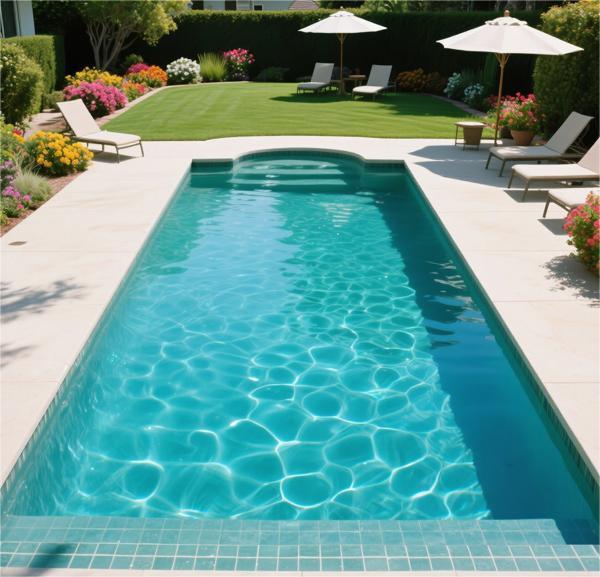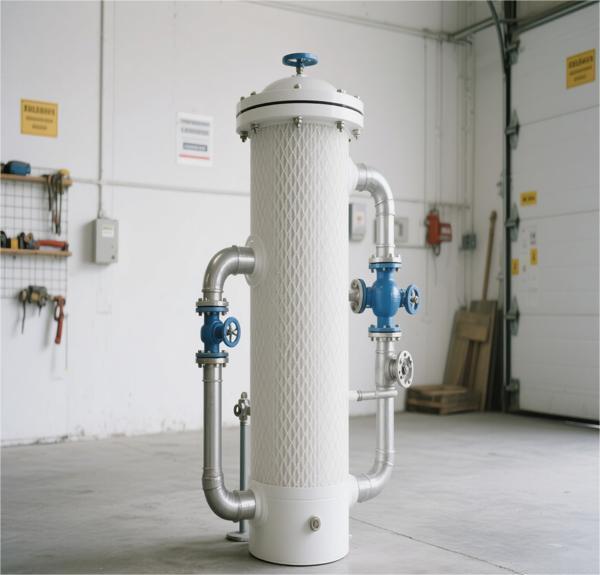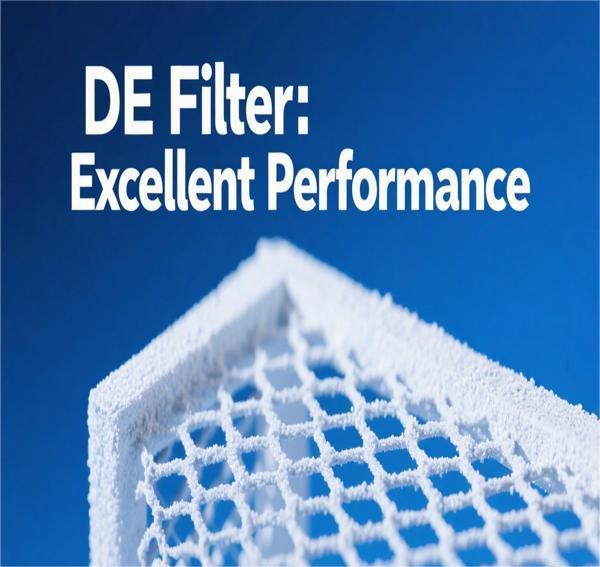Views: 0 Author: Site Editor Publish Time: 2025-07-21 Origin: Site








Pool owners face one critical decision that affects every swim: choosing the right filter. Your pool filter removes microscopic contaminants, making the difference between crystal-clear water and a murky mess. With three distinct filter types available, each offering unique benefits and drawbacks, selecting the optimal system requires understanding how they work, what they cost, and which suits your specific needs.
Pool filters work alongside your pump and sanitizer to maintain clean, healthy water. While chlorine kills bacteria and algae, the filter physically removes these dead contaminants along with dirt, oils, and debris. Without proper filtration, even perfectly balanced water chemistry can't deliver the sparkling results you want.
This comprehensive guide examines sand, cartridge, and diatomaceous earth (DE) filters, comparing their performance, maintenance requirements, and costs. You'll discover which filter type matches your pool size, budget, and lifestyle preferences, ensuring you make an informed decision that keeps your pool pristine for years to come.

Pool filtration operates on a simple principle: water circulates from your pool through the filter media, which traps contaminants before returning clean water to the pool. Your pump provides the necessary pressure to push water through increasingly fine filter materials.
Filter effectiveness is measured in microns—units equal to one-millionth of a meter. To put this in perspective, a human hair measures approximately 70 microns in diameter, while bacteria typically measure just 2 microns. The smaller the micron rating, the finer the particles your filter can capture.

Different filter types trap particles at varying micron levels:
Sand filters: 20-40 microns
Cartridge filters: 10-15 microns
DE filters: 2-5 microns
This measurement directly impacts water clarity and the filter's ability to remove microscopic contaminants that can cloud your water or harbor harmful bacteria.

Sand filters represent the most popular choice among pool owners, combining affordability with straightforward maintenance. These systems contain a tank filled with specially graded silica sand (#20 grade) that creates a filtration bed.
Water flows down through the sand bed, where millions of sharp-edged sand grains trap debris and contaminants. Clean water collects at the bottom of the tank before returning to your pool through the return lines.
The sand's jagged surface provides the filtration power. Over time, trapped debris actually improves filtration by creating smaller pathways for water to travel through, allowing the capture of particles smaller than the initial 20-40 micron rating.
Sand filters require minimal hands-on maintenance. When the pressure gauge reads 8-10 PSI above the normal operating pressure, it's time to backwash. This process reverses water flow, flushing trapped debris out through the waste line.
Backwashing typically takes 2-3 minutes until the sight glass runs clear. After backwashing, run a 30-second rinse cycle to resettle the sand bed. The entire process requires just 5 minutes and uses approximately 200-500 gallons of water.
Sand replacement occurs every 5-7 years when the grains become too smooth to trap debris effectively. A typical residential filter uses 250-500 pounds of sand, costing $100-200 for complete replacement.

Cartridge filters use pleated polyester media to create an enormous surface area within a compact tank. These systems excel at capturing smaller particles while operating at lower pressures than sand filters.
Water flows through pleated filter cartridges, typically arranged in groups of 2-4 units per tank. The polyester fibers trap particles down to 10-15 microns, delivering noticeably clearer water than sand filtration.
The large surface area means cartridge filters can handle substantial debris loads before requiring cleaning. They also work efficiently at lower flow rates, making them ideal for variable-speed pumps operating at reduced speeds.
Cartridge maintenance involves removing the filters monthly and hosing them clean from top to bottom. Rotate the cartridge while spraying to clean all pleats thoroughly.
Every 3-4 months, soak cartridges overnight in a specialized filter cleaner or diluted muriatic acid solution to dissolve oils and organic buildup that simple rinsing can't remove.
Cartridges typically last 2-3 years before the fabric begins breaking down. Replacement costs range from $30-100 per cartridge, depending on size and quality.

DE filters provide the finest filtration available for residential pools. These systems use fossilized remains of tiny aquatic organisms called diatoms, creating a filter media capable of trapping particles as small as 2-5 microns.
Inside the tank, fabric-covered grids or tubes hold the diatomaceous earth powder. As water flows through, the DE coating acts like thousands of tiny sieves, capturing microscopic particles that other filter types miss entirely.
This ultra-fine filtration produces water clarity that's visibly superior to sand or cartridge systems. DE filters can transform cloudy water to crystal clear conditions in just 24-48 hours.
DE filters require the most involved maintenance routine. When pressure increases 8-10 PSI above normal, backwash the system just like a sand filter. However, this process removes the valuable DE powder along with the trapped debris.
After backwashing, you must add fresh DE powder through the skimmer while the pump runs. Mix the powder with water to create a slurry before adding it slowly to ensure even distribution across all grids.
Once or twice annually, disassemble the entire filter to manually clean the grids with a garden hose. This process takes 1-2 hours but ensures optimal performance and extends grid life.
DE powder costs approximately $35 for a 25-pound bag, with most filters requiring 2-8 pounds per recharge depending on size.
| Feature | Sand Filter | Cartridge Filter | DE Filter |
|---|---|---|---|
| Filtration Precision | 20-30 microns | 10-15 microns | 2-5 microns |
| Maintenance Frequency | Weekly/bi-weekly backwash | Monthly cartridge cleaning | Monthly backwash + DE replenishment |
| Water Usage | High (backwashing) | Low (manual rinse) | Medium (backwash + rinse) |
| Operating Cost | Low | Medium-high | Medium |
| Initial Investment | Lowest | Medium | Highest |
| Media Lifespan | 5-7 years | 2-3 years | Powder: per use / Grids: 2-3 years |
| Energy Efficiency | Standard | Excellent | Good |
Lowest upfront cost makes them accessible for budget-conscious pool owners
Simple maintenance requires no physical handling of filter media
Durability provides 10-15 years of tank life with minimal repairs
Handles high flow rates effectively, ideal for large pools
Wide availability of parts and service technicians
Least effective filtration allows smaller particles to pass through
Water waste from regular backwashing can be substantial
Declining efficiency as pressure builds between backwashes
Chemical assistance often needed for optimal water clarity
Superior particle removal creates visibly clearer water
Water conservation eliminates backwashing water waste
Energy efficient operation at lower pressures reduces pump workload
Compact design fits in smaller equipment areas
Chemical reduction may allow lower sanitizer levels
Higher replacement costs for ongoing filter purchases
Physical maintenance requires handling and cleaning filters
Limited capacity may clog quickly in high-debris situations
Deep cleaning requirements every few months
Unmatched filtration removes microscopic particles other systems miss
Rapid water clearing resolves problem conditions quickly
Long-lasting grids provide years of service when properly maintained
Chemical efficiency allows optimal sanitizer performance
Highest total cost for equipment and ongoing supplies
Complex maintenance requires more time and effort
Safety considerations for handling potentially harmful powder
Limited availability for above-ground pool applications
Disposal restrictions in some municipalities
Choose sand filtration if you prioritize affordability and simple maintenance over ultimate water clarity. Sand filters work well for:
Large residential pools (20,000+ gallons)
Commercial applications requiring robust, low-maintenance systems
DIY pool owners who prefer hands-off maintenance
Areas with hard water where cartridges would clog frequently
Cartridge systems offer the best compromise between performance and convenience for:
Medium-sized pools (10,000-25,000 gallons)
Variable-speed pump systems operating at reduced flow rates
Water-conservation areas where backwashing is restricted
Pool owners willing to invest in superior water quality
Consider DE filtration when water clarity is paramount and maintenance complexity isn't a concern:
High-use pools requiring consistently pristine conditions
Problem water situations with frequent algae or clarity issues
Pool enthusiasts who appreciate the finest filtration available
Locations where DE disposal is permitted
Small Pools (Under 15,000 gallons):
Cartridge filters typically provide the best value, offering superior filtration without oversizing issues.
Medium Pools (15,000-30,000 gallons):
All three filter types work effectively. Choose based on your priorities for maintenance, water quality, and operating costs.
Large Pools (Over 30,000 gallons):
Sand filters often prove most practical due to their high flow capacity and resistance to clogging.
Can I combine different filter types?
While you can't mix media within a single filter tank, some pool owners use multiple filtration stages. For example, a cartridge pre-filter can remove larger debris before water reaches a DE filter, extending the primary filter's life.
How do I size my pool filter correctly?
Filter sizing depends on your pump's flow rate and pool volume. A general rule suggests 1 square foot of filter area per 10,000 gallons of pool water. However, oversizing your filter improves performance and extends time between cleanings.
When should I backwash or clean my filter?
Monitor your filter's pressure gauge regularly. When pressure rises 8-10 PSI above the clean starting pressure, it's time for maintenance. This typically occurs every 1-2 weeks during peak season, depending on bather load and environmental conditions.
What's the best time to replace filter media?
Sand: Replace when frequent backwashing becomes necessary or water clarity declines despite proper chemistry.
Cartridges: Replace when the fabric becomes frayed, pleats won't clean completely, or the filter can't maintain proper flow.
DE grids: Replace when the fabric develops holes or the frame cracks.
Are there energy-efficient filter options?
Cartridge filters typically consume the least energy due to their low operating pressure requirements. Variable-speed pumps paired with properly sized cartridge filters can reduce energy consumption by 50-80% compared to single-speed pump and sand filter combinations.
Choosing the right pool filter impacts your enjoyment, maintenance routine, and long-term costs for years to come.
Sand filters deliver reliable performance at the lowest initial cost, making them ideal for budget-conscious pool owners who prioritize simplicity.
Cartridge filters provide the best balance of performance and convenience, offering superior water quality while conserving water and energy.
DE filters represent the premium choice, delivering unmatched clarity for those willing to invest in more complex maintenance.
Consider your pool size, usage patterns, local water restrictions, and personal preferences when making this important decision. Remember that proper sizing matters more than filter type—an oversized sand filter often outperforms an undersized cartridge system.
Whatever filter you choose, consistent maintenance and proper water chemistry remain essential for optimal results. Regular cleaning, timely media replacement, and balanced water ensure your filtration system performs at its peak, providing years of crystal-clear swimming enjoyment.
